Circuit Safety Protection for Personal Digital Products SETsafe | SETfuse Solutions and Products
This article focuses on circuit safety protection for personal digital products with lithium batteries, covering:
| Lithium Battery Safety Protection
| Interface Circuit Electrostatic Discharge (ESD) Protection
Examples of Personal Digital Products With Lithium Batteries
Smartphones, Tablets, Laptops, Smartwatches, Fitness Trackers, Wireless Earphones, Portable Speakers, Digital Cameras, Camcorders, Portable Gaming Devices, Power Banks, Smart Home Devices, Drones, Electric Toothbrushes, Electric Razors, Smart Massagers, Virtual Reality (VR), and Augmented Reality (AR) Devices.
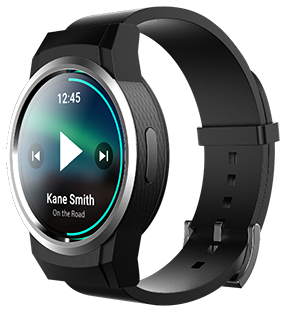
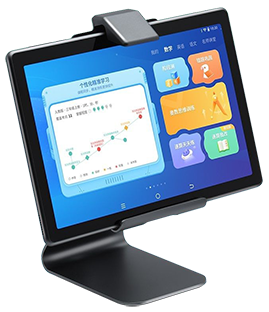

Why Lithium Batteries in Personal Digital Products Require Safety Protection
The primary reasons are as follows:
Preventing Overcharge and Overdischarge
Overcharging lithium batteries may cause overheating, swelling, or even explosions, while overdischarging can damage the internal structure, reduce lifespan, or cause short circuits. Safety protection circuits, such as Battery Management Systems (BMS), monitor voltage to prevent these issues.
Avoiding Overheating and Thermal Runaway
Lithium batteries under high temperatures or abnormal charging conditions may trigger thermal runaway, leading to fires or explosions. Protection mechanisms, such as temperature sensors and thermal fuses, can interrupt current or dissipate heat in time.
Preventing Short Circuits
External short circuits or internal defects may cause high currents, leading to overheating or battery damage. Protection circuits detect abnormal currents and disconnect promptly.
Extending Battery Lifespan
Safety protection optimizes charging and discharging processes (e.g., controlling charge rates), reducing chemical degradation and extending battery life.
Ensuring User Safety
Without protection, lithium batteries in extreme conditions (e.g., physical damage or misuse) may cause fires or explosions, endangering users. Protection mechanisms mitigate these risks.
Addressing Environmental Impacts
Personal digital products are often exposed to complex environments (e.g., high/low temperatures, impacts). Safety protection ensures stable battery operation under such conditions.
Mandatory Standards and Regulations
International Standards
IEC 62133
An International Electrotechnical Commission (IEC) standard for the safety of secondary (rechargeable) lithium batteries in portable devices. It includes tests for overcharge, overdischarge, short circuits, and thermal abuse. Many countries adopt it as a mandatory certification basis.
UN 38.3
A United Nations standard for lithium battery transportation safety, requiring tests for vibration, impact, overcharge, and forced discharge to ensure safe transport. Nearly all exported lithium battery products must comply.
IEC 62619
A safety standard for industrial lithium batteries, also applicable to some consumer electronics, emphasizing prevention of thermal runaway and fire risks.
Chinese Standards
GB 31241-2022
A mandatory Chinese national standard, *Safety Technical Specifications for Lithium-Ion Batteries and Battery Packs in Portable Electronic Products*, applicable to smartphones, tablets, laptops, etc. It specifies safety tests for overcharge, short circuits, crushing, and thermal shock.
CQC Certification
China Quality Certification Centre (CQC) conducts mandatory or voluntary certifications for lithium batteries based on GB standards, widely used in the domestic market.
CCC Certification (China Compulsory Certification)
Certain electronic products with lithium batteries (e.g., smartphones, laptops) require CCC certification, which includes battery safety performance.
EU Standards
EU Battery Regulation (2023/1542)
Requires lithium batteries to meet safety, environmental, and recycling standards, covering design, production, and disposal. The 2023 regulation strengthens requirements for battery safety and sustainability.
EN 62133
The EU equivalent of IEC 62133, mandating safety tests for lithium batteries in portable devices.
U.S. Standards
UL 1642
A safety standard by Underwriters Laboratories (UL) for lithium batteries, testing safety under conditions like overcharge, short circuits, and high temperatures. Many consumer electronics require UL certification.
UL 2054
A safety standard for household and commercial battery packs, commonly used in portable electronics.
FCC Requirements
Lithium battery devices must comply with the U.S. Federal Communications Commission (FCC) electromagnetic compatibility requirements, indirectly involving battery safety.
Other Regions
Japan PSE Certification
Japan’s Electrical Appliance and Material Safety Law requires lithium batteries and related products to meet PSE safety standards, covering electrical and mechanical safety.
Korea KC Certification
A mandatory Korean certification requiring lithium batteries to pass safety and performance tests, similar to China’s CCC.
Industry Standards and Additional Requirements
Beyond mandatory regulations, many manufacturers and industry organizations follow voluntary standards, such as:
IEEE 1725:
Battery safety standard for mobile devices, commonly used in smartphones.
IEEE 1625:
Battery safety standard for laptops.
Major tech companies (e.g., Apple, Samsung) may set internal standards, requiring suppliers’ lithium batteries to meet higher safety requirements.
Lithium batteries in personal digital products require safety protection due to risks like overcharge, overdischarge, short circuits, and overheating, which can lead to swelling, damage, fires, or explosions, endangering user safety. Protection circuits and mechanisms (e.g., BMS, temperature sensors) monitor voltage, current, and temperature, prevent thermal runaway, extend battery lifespan, and ensure stability in complex environments (e.g., high/low temperatures, impacts). These measures ensure device reliability, user safety, and compliance with international and regional standards (e.g., IEC 62133, GB 31241).
SETsafe | SETfuse Solutions, Products
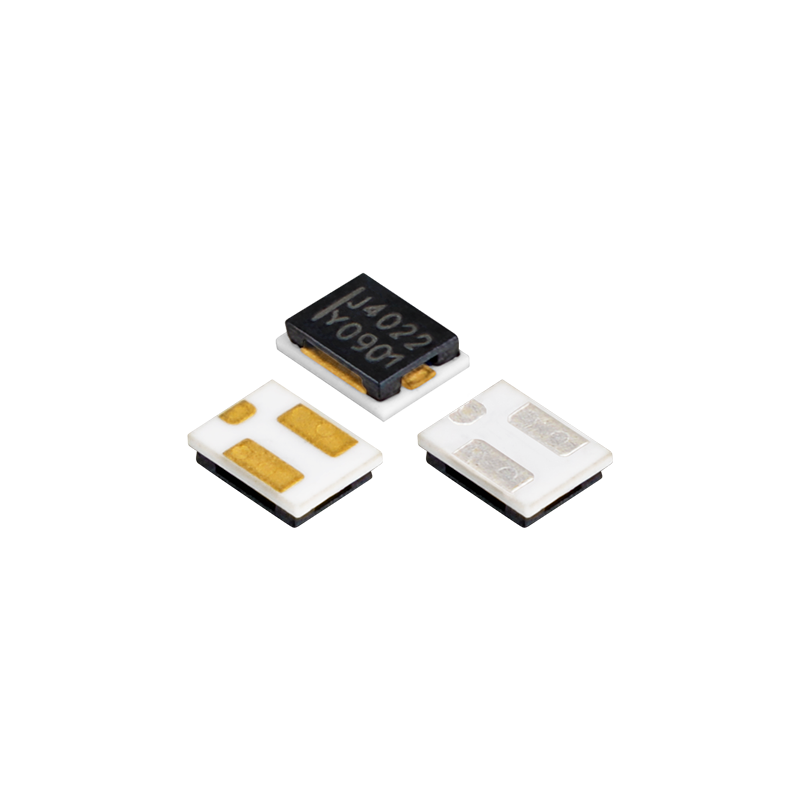


Protection Type:
Lithium Battery Overcurrent and Overtemperature Safety Protection
Product Name:
Heat CutOff (HCO), also known as Three-Terminal Fuse
Series:
SHJ Learn more
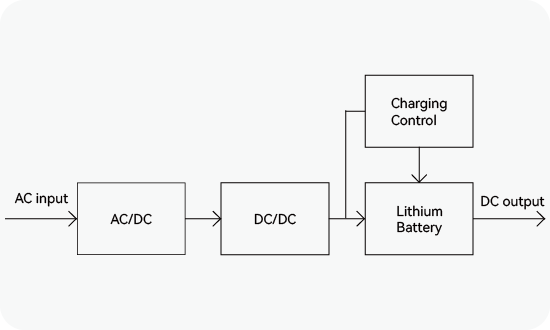
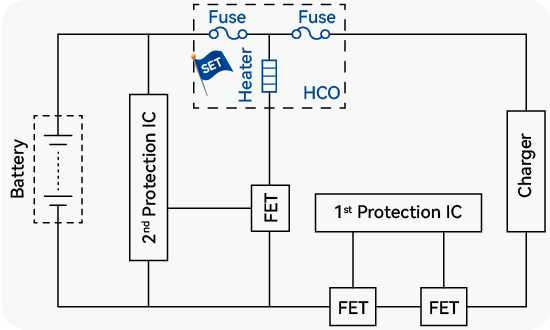
Protection Type:
Interface Circuit Electrostatic Discharge (ESD) Protection
Product Name:
ESD Transient Voltage Suppressor (TVS)
Series:
SD0504F06U Learn more
SD0504F10U Learn more
SD0304F10U Learn more
SDxxxxD32G Learn more
SD0308F10L Learn more
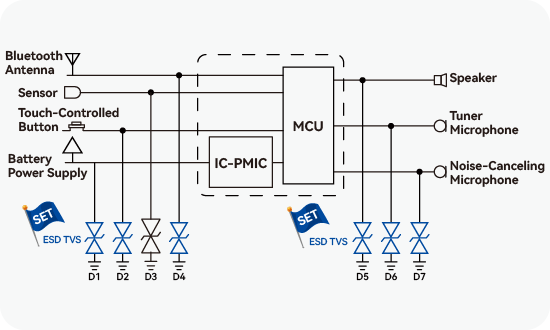

Partner with SETsafe | SETfuse to Transform Technical Challenges into Reliable Solutions
When you encounter technical challenges in selecting circuit protection components or designing system solutions, the professional engineering team at SETsafe | SETfuse is your trusted partner. Specializing in over-temperature, over-current, over-voltage, and active protection technologies, SETsafe | SETfuse offers comprehensive technical expertise and rapid response to meet your needs. Whether you require precise product parameter guidance or comprehensive system-level protection solutions, SETsafe | SETfuse delivers professional, practical, and efficient recommendations and support.
From initial design consultation and solution implementation to post-sales product assurance, we provide end-to-end collaboration, ensuring your project progresses seamlessly and reliably. For any inquiries or requirements, please contact us at: sales@SETfuse.com
Professional Circuit Protection, Supporting You from Concept to Production


































 Rechargeable Battery
Rechargeable Battery Personal Digital Products
Personal Digital Products Electric Power Tool
Electric Power Tool Light Electric Vehicles
Light Electric Vehicles Electric Vehicles
Electric Vehicles Energy Storage Batteries
Energy Storage Batteries Small Household Appliances
Small Household Appliances Lithium Battery Thermal Runaway
Lithium Battery Thermal Runaway Energy Storage System (ESS)
Energy Storage System (ESS) New Energy
New Energy PV Power Generation
PV Power Generation SPD for Wind Power Generation
SPD for Wind Power Generation EV Charging Stations
EV Charging Stations Lifestyle Appliances
Lifestyle Appliances Kitchen Appliances (Hotplates ...)
Kitchen Appliances (Hotplates ...) Air Fryer
Air Fryer Coffee Machine
Coffee Machine Electric Iron
Electric Iron Smart Toilet
Smart Toilet Outdoor Streetlight
Outdoor Streetlight Power Supply
Power Supply Power Supply (Power < 20 Watts)
Power Supply (Power < 20 Watts) HVDC in Data Centers
HVDC in Data Centers Power Supply Unit (PSU)
Power Supply Unit (PSU) Battery Backup Unit (BBU)
Battery Backup Unit (BBU) Uninterruptible Power Supply (UPS)
Uninterruptible Power Supply (UPS) Lighting
Lighting Telecommunication
Telecommunication Automotive
Automotive Power Strip
Power Strip Security & Protection
Security & Protection Home Appliances
Home Appliances Lightning Protection Components
Lightning Protection Components













































